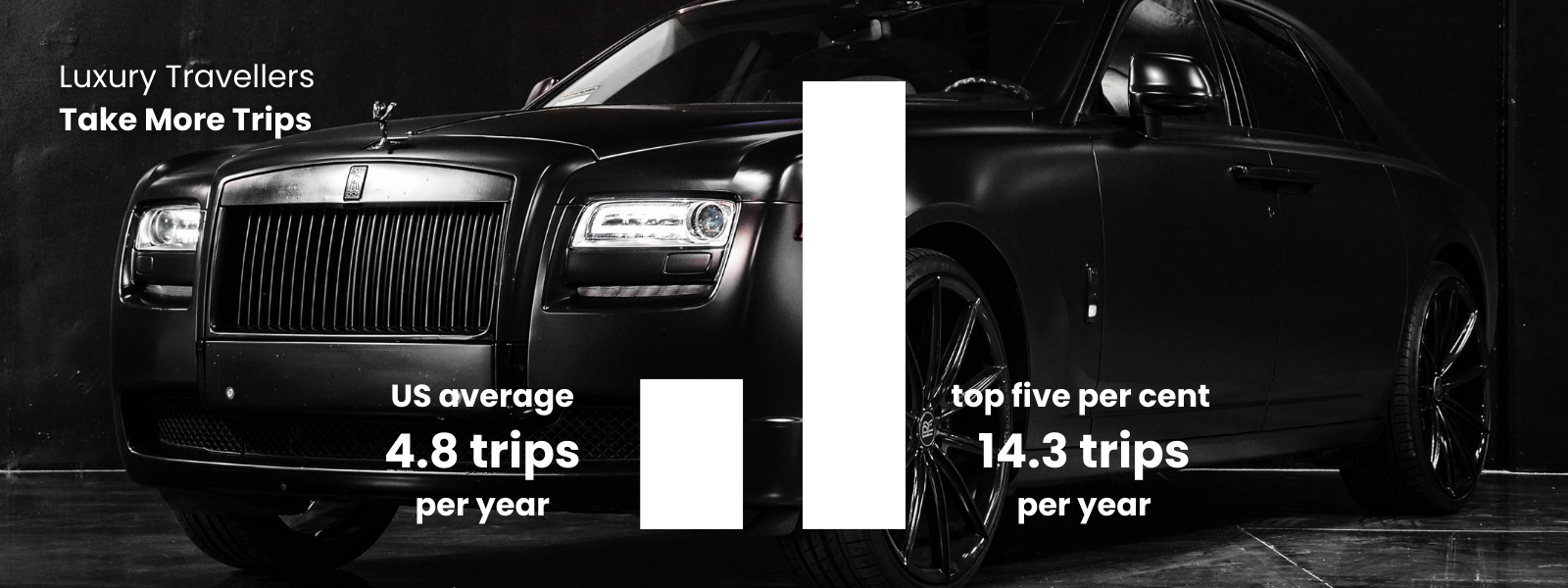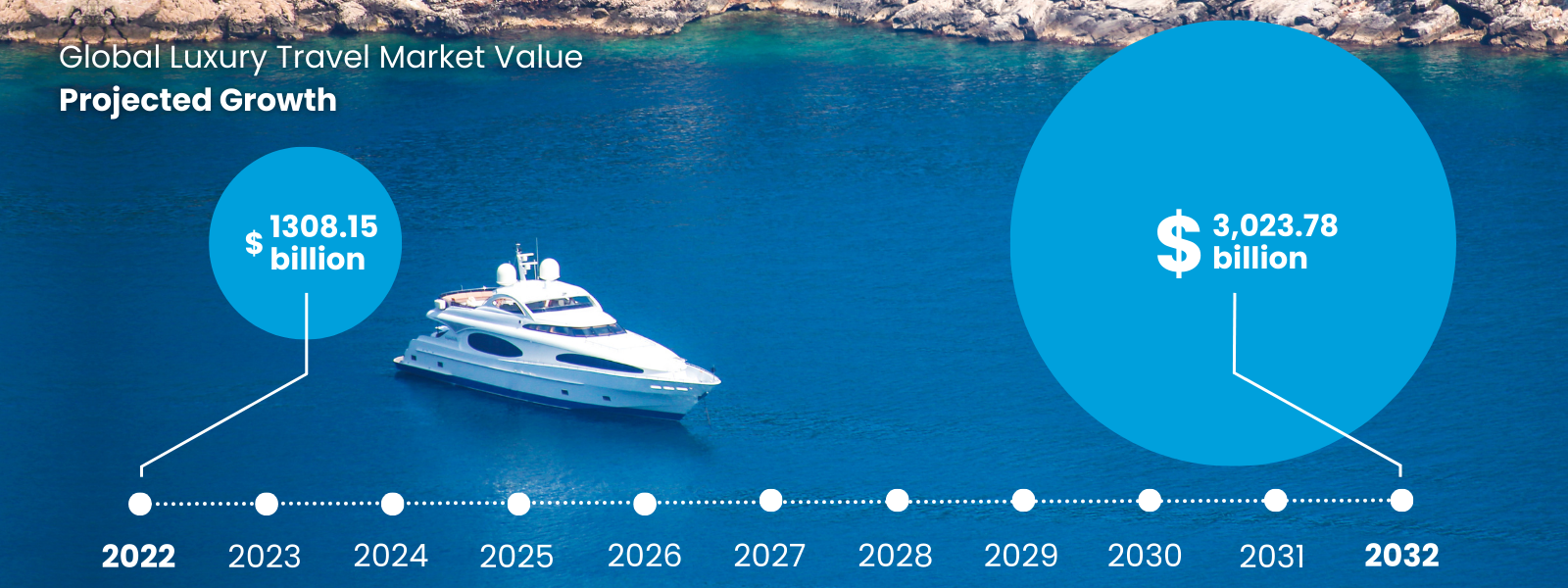
The global luxury travel market is huge, not in the number of guests with substantial buying power but the astonishing level of buying power that these luxury travellers have. The good news for hoteliers targeting those top 5% of guests is that they seem to spending more every year.
NB: This is an article from GuestRevu
Subscribe to our weekly newsletter and stay up to date
The global Luxury tourism market had an estimated total revenue of USD 1,308.15 billion in 2022, and is projected to be worth USD 3,023.78 billion by 2032.
Aside from these travellers being prepared to spend up to $3000 per night, with the average landing at a comfortable $500 per night according to a Bloomberg MLIV Pulse Survey, they are also taking more than double the number of trips that your regular traveller may take. A study by Resonance found that “the top five per cent take 14.3 trips per year (half for business and half for leisure, totalling an average of 29 days per year). U.S. travellers overall take an average of 4.8 trips.”

One of the biggest benefits of appealing to the luxury market is that while the rest of the world may be affected financially by global events (e.g. covid-19, the Russia-Ukraine War and the cost of living crisis) these most affluent travellers have the wealth to continue to spend despite global economic turmoil.
How do you attract this small but lucrative target segment to your property?
STEP 1: KNOW WHO YOU ARE TALKING TO
The luxury travel industry is fairly complex, with different demographic groups looking for different experiences from their luxury holiday. While they all have significant buying power, marketing to the different guest segments would look quite different.
By age group, the market is segregated into Millennials, Generation X, Baby Boomers, and the Silent Generation. Depending on the degree of wealth these types of luxury travellers will spend on travel, products are further segmented into absolute luxury, aspiring luxury and accessible luxury. The absolute luxury segment spends the most and most frequently. However, targeting aspiring and accessible luxury travellers could lead to a significant boost in your bottom line, as they are still frequent travellers who are looking for exceptional experiences in their next destination.

Millennials & Aspiring Luxury
One significant luxury demographic group are the Millennials, these are travellers between the ages of 28-43 who were born into the age of technology and use it to their advantage. They generally seem to be more active than the Baby Boomers and also seek unique experiences and culturally immersive trips over predictable luxury hotel stays.




